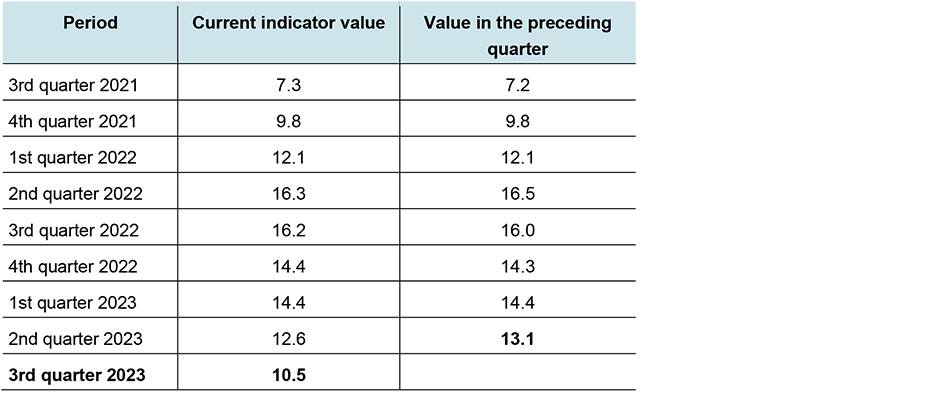Employment outlook in the manufacturing sector clouding over
Although the KOF Employment Indicator is falling in the third quarter of 2023, it remains in clearly positive territory. The deterioration in the employment outlook is limited to individual sectors which are affected more by global economic trends. Overall, we still expect to see employment growth in the Swiss labour market.
Since peaking in the second quarter of 2022, the KOF Employment Indicator has been gradually trending lower. The indicator for the third quarter of 2023 stands at 10.5 points, which is almost 6 points below where it peaked in the second quarter of 2022. Nevertheless, the situation remains encouraging. The KOF Employment Indicator is still well above its long-term average of 1.0 points.
The KOF Employment Indicator is calculated from the quarterly KOF Business Tendency Surveys. The evaluations for the third quarter of 2023 are based on the responses of around 4,500 firms that were surveyed in July regarding their employment plans and projections. On balance, a clear majority of the firms surveyed still consider their current staffing levels to be too low. In addition, there are still significantly more companies that are looking to increase their workforce in the next three months than firms that are planning to reduce employment. Since the KOF Employment Indicator has in the past acted as a leading indicator of employment and workforce trends, the indicator for the current and coming quarters points to an encouraging trend in the Swiss labour market.
Domestic sectors planning job growth; reduction in manufacturing and wholesaling
The levels of KOF’s sector-specific employment indicators remain high in most sectors and are also stable compared with the last quarter. These are primarily domestic sectors such as construction, hospitality and the retail trade. The majority of firms in these sectors expect to see job growth over the current and coming quarters. Insurance companies are also very optimistic, forecasting historically strong employment growth over the coming months.
The situation in the banking, wholesale and manufacturing sectors is worse. Workers in these sectors, which are partly export-driven, are likely to feel the effects of the global economic slowdown over the coming months. The majority of companies in the banking and manufacturing sectors consider their current staffing levels to be too high and are planning to reduce their workforce over the coming months. The employment indicator for the wholesale trade fell for the second time in a row.
KOF Employment Indicator
The KOF Employment Indicator is calculated on the basis of the quarterly KOF Business Tendency Surveys. As part of these surveys, KOF asks private businesses in Switzerland to assess their current staffing levels and to state whether they intend to change them over the coming three months. A positive indicator figure means that the number of surveyed companies considering staff cuts in the reference quarter is smaller than the number of companies intending to create jobs. It has been shown in the past that these assessment anticipate actual trends on the labour market.
Click here for more information about the Indicator and its methodology.
Contact
KOF FB Konjunktur
Leonhardstrasse 21
8092
Zürich
Switzerland

